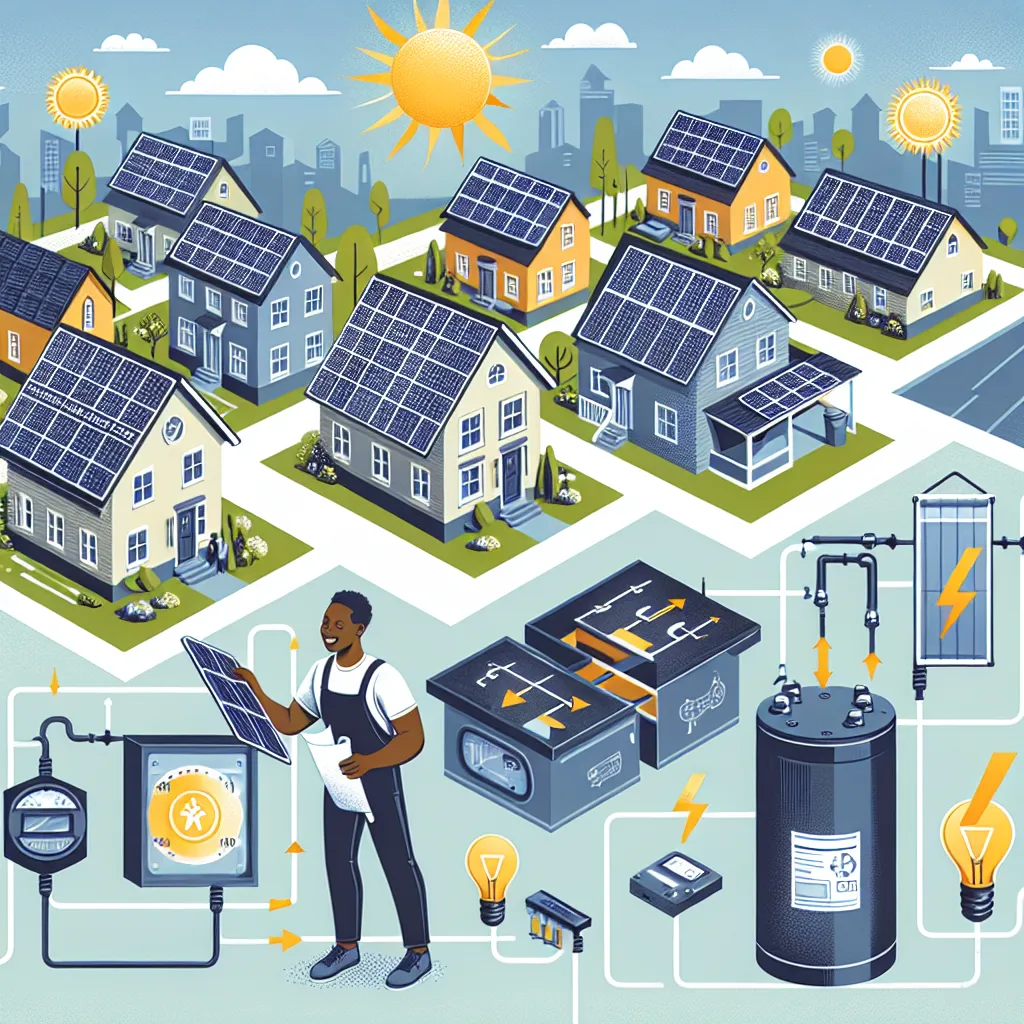Solar System for Home: Harnessing Renewable Energy
Solar System for Home: Harnessing Renewable Energy
Introduction
In recent years, there has been a growing global interest in harnessing renewable energy sources, and one of the most popular options is solar power. As concerns over climate change and the depletion of fossil fuels continue to rise, individuals and families are looking for sustainable ways to power their homes. This article explores the concept of a solar system for home, its benefits, components, installation process, and financial considerations.
1. Understanding Solar Power
Solar power is the conversion of sunlight into electricity using photovoltaic (PV) cells. These cells are made of semiconductor materials, usually silicon, which generate an electric current when exposed to sunlight. The electricity produced can be used to power various appliances and devices in our homes.

2. Benefits of Solar Systems for Home
2.1. Renewable and Sustainable Energy: Solar power is a clean and renewable energy source, unlike fossil fuels that contribute to air pollution and greenhouse gas emissions. By installing a solar system for your home, you can significantly reduce your carbon footprint and help combat climate change.
2.2. Energy Independence: Generating your electricity through solar power allows you to become less reliant on the grid. This means you can reduce or eliminate your monthly electricity bills and protect yourself from rising energy costs.
2.3. Long-Term Financial Savings: While the initial investment for a solar system installation may seem significant, it is a long-term investment that pays off over time. With proper maintenance, solar panels can last for 25 years or more, providing substantial savings on your energy bills throughout their lifespan.
2.4. Increased Property Value: Homes equipped with solar systems are more attractive to potential buyers. Studies have shown that solar-powered homes sell faster and at higher prices than conventional homes.
3. Components of a Solar System
A solar system for home consists of several key components:
3.1. Solar Panels: These are the most visible part of a solar system. Solar panels capture sunlight and convert it into electricity. They are typically installed on rooftops or open areas with maximum sun exposure.
3.2. Inverter: The inverter is responsible for converting the direct current (DC) electricity produced by the solar panels into alternating current (AC) electricity, which is suitable for powering household appliances.
3.3. Batteries: Although not always necessary, batteries can be used to store excess electricity generated during the day for use during the night or in case of power outages.
3.4. Mounting and Racking: These components provide a secure structure for the solar panels, ensuring they are properly positioned and angled for maximum sunlight exposure.
3.5. Monitoring System: A monitoring system allows homeowners to track the performance of their solar system, including energy production and consumption, to optimize energy usage and identify any potential issues.
4. Installation Process
Installing a solar system for your home typically involves the following steps:
4.1. Site Assessment: A professional solar installer evaluates your property’s solar potential by considering factors such as roof orientation, shading, and available space.
4.2. Design and Permitting: Based on the site assessment, the solar installer designs a solar system tailored to your specific needs and applies for any necessary permits from local authorities.
4.3. Installation: Once the permits are obtained, the solar panels, inverter, and other components are installed by a team of professionals. This process usually takes a few days, depending on the system’s size.
4.4. Connection to the Grid: After the installation, your solar system is connected to the utility grid. This allows you to receive electricity from the grid when needed and sell excess electricity back to the grid through net metering programs in some areas.
5. Financial Considerations
5.1. Cost: The cost of a solar system for home varies depending on factors such as the system’s size, location, and quality of components. While the initial investment may seem significant, there are various financing options, incentives, and rebates available that can help offset the cost.
5.2. Return on Investment (ROI): A solar system pays for itself over time through savings on electricity bills. The ROI period depends on factors such as your energy consumption, local electricity rates, and the system’s efficiency. On average, homeowners can expect to recoup their investment within 5 to 10 years.
5.3. Government Incentives: Many governments provide incentives to promote the adoption of solar power. These can include tax credits, grants, and feed-in tariffs, which allow homeowners to sell excess electricity back to the grid at favorable rates.
Conclusion
Installing a solar system for your home is an environmentally friendly and financially rewarding decision. By harnessing the power of the sun, you can reduce your carbon footprint, enjoy energy independence, save money on electricity bills, and increase the value of your property. With advancements in technology and government support, solar power is becoming an increasingly viable option for homeowners around the world. Consider making the switch to solar and join the movement towards a cleaner and more sustainable future.
